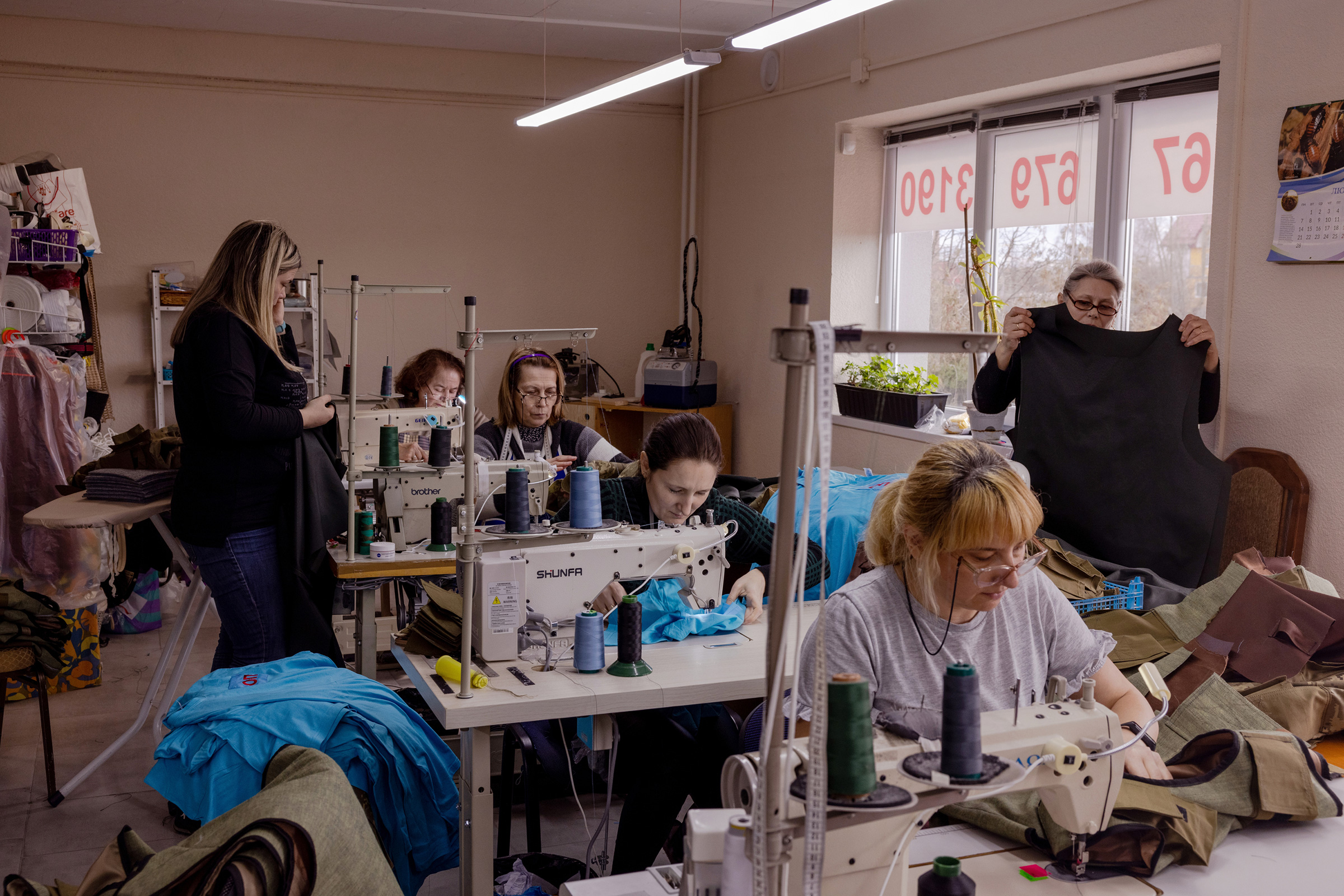On a chilly evening in mid-March, Myroslava Bodakovksa was clearing out the trunk of her car, getting ready for another nocturnal mission. She’d parked the car behind the main railway station in Lviv in western Ukraine, where women and children fleeing violence and horror were arriving in trains from all over the country. Bodakovska, a 38-year-old travel agent, wanted to greet as many as possible. “I pick them up on the platform and take them to a shelter,” she says, estimating she makes about 20 such trips each night. “I go back and forth until the sun comes up. Then I go to bed.”
Over the last three weeks, this has been Bodakovska’s routine. When Russia launched a full-scale invasion of Ukraine on Feb. 24, Bodakovska was in nearby Poland receiving treatment for skin cancer. Despite her doctors urging her to rest, she raced back to Ukraine to help. “I am now fighting two wars: with cancer, and with Russia,” she says, arranging soft toys on her car’s backseat for children to play with when they arrive.

Bodakovska is one of the millions of Ukrainian women who have mobilized across the country since war broke out, providing vital logistics and non-combat support. They describe themselves as the “rear front line,” a reference to the military term of back operations supporting those doing the fighting on the front lines.
Read More: The Mothers Returning to Ukraine to Rescue Their Children
Women make up around 15% of Ukraine’s army, meaning there are around 30,000 women currently facing Russia on the battlefield. But their fight extends much further: the businesswoman storing medical supplies beside a fridge of freshly piped cakes in her patisserie; the wedding dressmaker switching out lace for camouflage; the schoolteacher running a hotline that searches for relatives in the besieged city of Mariupol.
Together, they pose an unanticipated challenge to Russian President Vladimir Putin, becoming the other line of defense in a war where solidarity and high morale appear to be thwarting Russia’s plans for a swift victory. “He did not take us into account,” says Liliya Chyzh, a pulmonologist who recently returned to Ukraine after escorting her 84-year-old mother to safety in Poland. She now treats internally displaced women and children free of charge in Lviv.
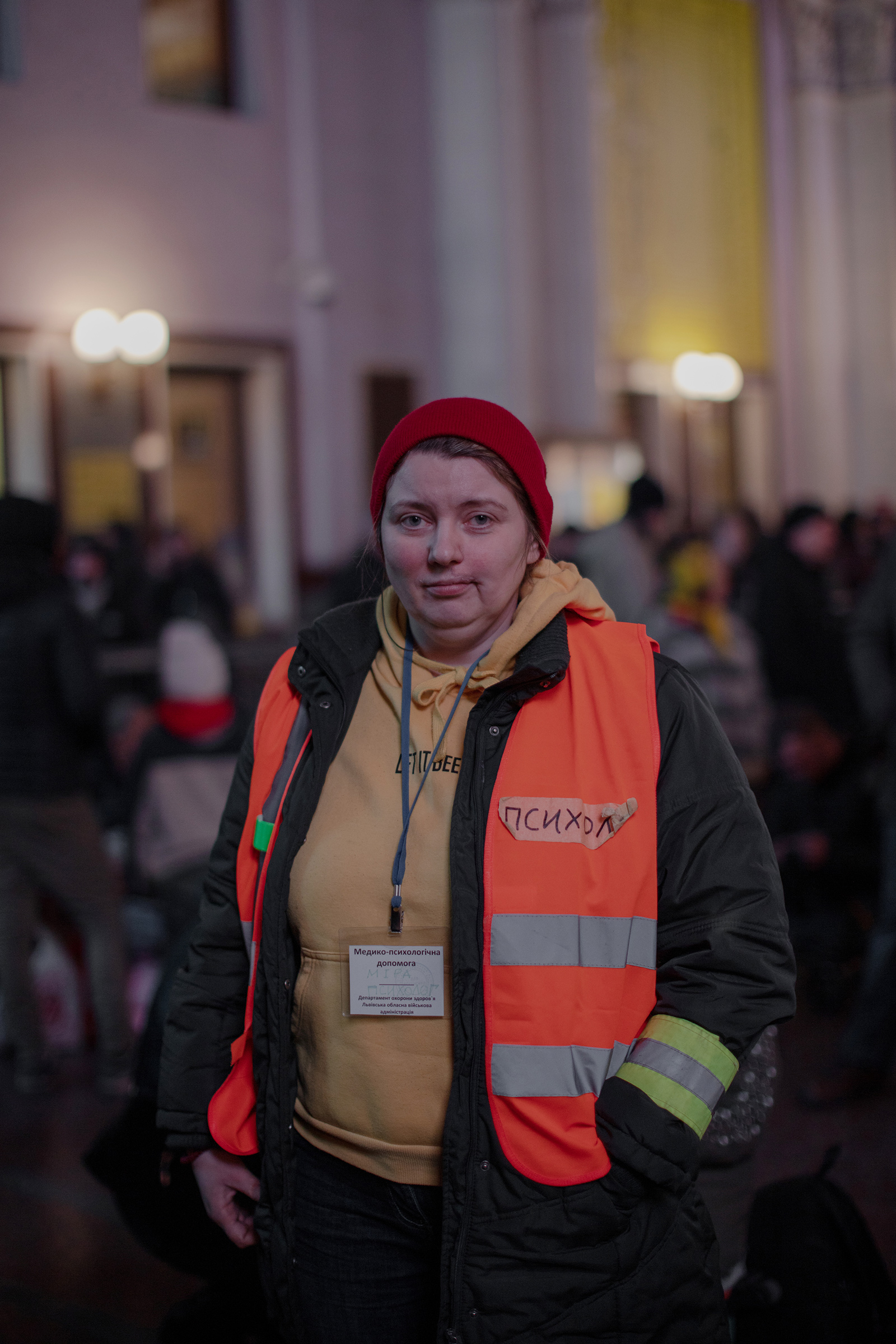
The large city near the Polish border has become a sanctuary for hundreds of thousands of fleeing Ukrainians. Though the calm was shattered on March 18 when Russian cruise missiles targeted the airport, sending plumes of black smoke across the skyline, Lviv has remained relatively safe.
Read More: What It’s Like for Ukrainian Journalists Reporting on the War in Their Country
Even so, it’s jittery with war preparation. Government offices have been sandbagged, cultural treasures stored away and a nightly curfew is in place. Trams criss-crossing the city are packed with women and children, would-be refugees on their way west, joining more than 3 million of their compatriots who have already escaped. Techno clubs have been converted into temporary refuges and soup kitchens, while art museums and restaurants are abuzz with women and men tapping at laptops, sorting through lists of tens of thousands of displaced people needing accommodation and transport.
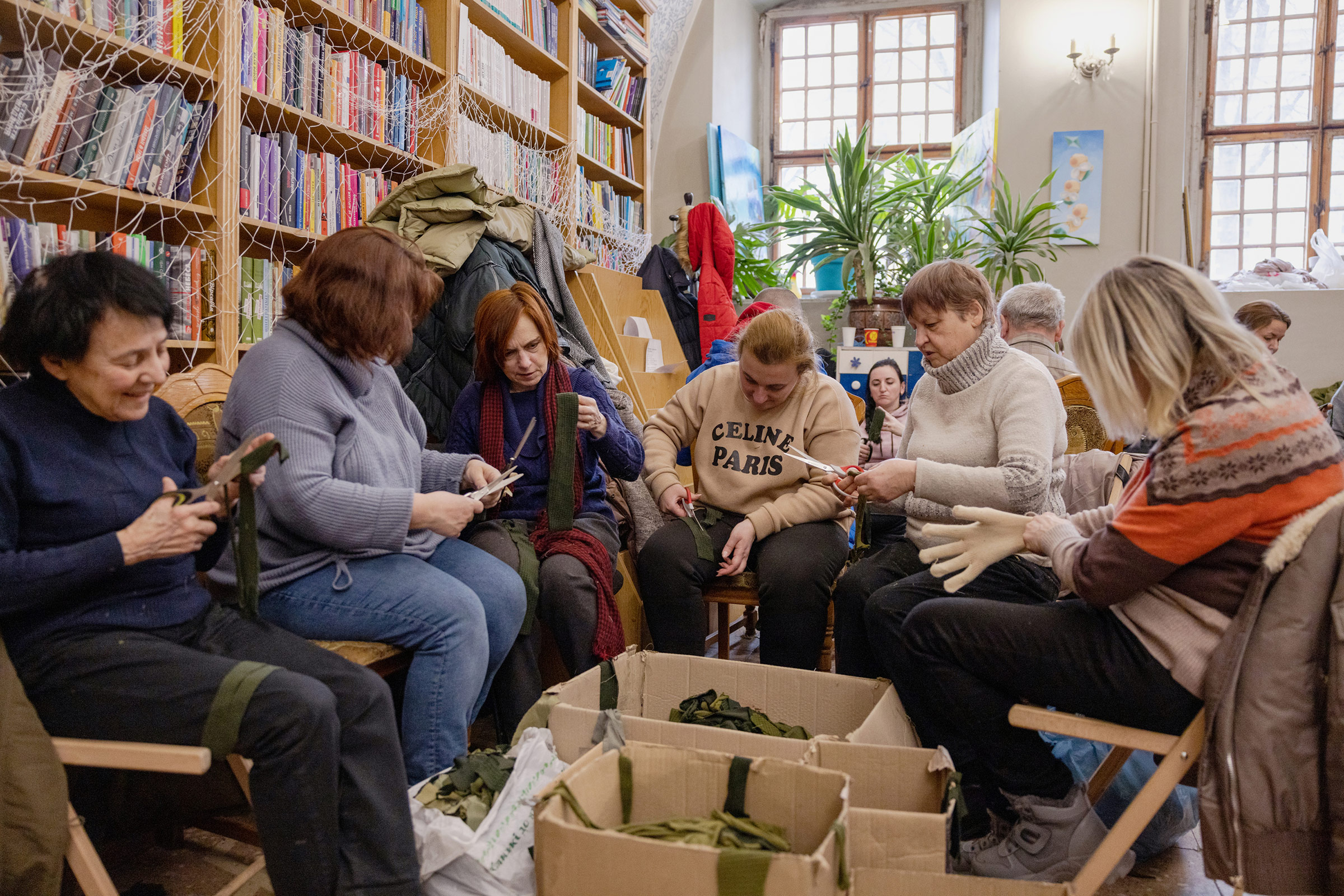
Everyone is a volunteer, and most of them are women. The scenes are reminiscent of World War II in the United States and Europe, including the Soviet Union, when women were instrumental to the war effort, working in weapons factories and taking up clerical jobs to free men to fight.
While there is no enforced military conscription in Ukraine, men between the ages of 18 and 60 have been barred from leaving the country, and are widely expected to take up arms. The country has one of Europe’s largest militaries, with over 195,000 active-duty personnel, and another 900,000 reservists and 100,000 territorial defense forces. Thousands more men and women are enlisting, and President Volodymyr Zelensky has encouraged civilians to join the fight.
Locals say Ukrainian fighters are able to draw motivation from nationwide efforts that often involve whole families. For Russian soldiers, who are far from home and whose relatives are out of harm’s way in Russia, the war can feel “impersonal,” argues seamstress Natalia Domashovets. “Every Ukrainian family is involved, and that’s why we are strong, and that is also why we will win,” she says, after finishing sewing the hem of a grenade vest.


Ukraine’s incredible determination in fighting its much larger and more powerful neighbor has stunned the world, a feat made more impressive given that 10 million people, around one in four Ukrainians, have fled their homes since the war began almost one month ago, according to the U.N. In areas under Russian occupation, unarmed civilians have draped themselves in the Ukrainian flag and faced off Russian soldiers in tanks. But as Russia’s military fails to significantly advance, it has switched tactics to targeting civilians over military infrastructure, Ukraine’s government has warned. This has led many in the West, including Washington, to accuse Russia of war crimes.
Such atrocities are being documented by a new collective of around 120 women volunteers, called Dattalion, who take photos and videos from the war’s hotspots. The imagery is reviewed in house, placed in an open database and provided to the media and various Ukrainian government bodies. “We are primarily women, as men are fighting or doing more dangerous stuff,” says Dattalion’s founder, a former Ukrainian government official and businesswoman who fled Ukraine for a European Union country just over a week ago. She spoke to TIME on condition of anonymity because she fears for the safety of her team members and family still in Ukraine.
Read More: The World Is Watching Russia Invade Ukraine. But Russian Media Is Telling a Different Story
Women across Ukraine have used their smartphones to capture executions, the bombing of air raid shelters and children having their legs amputated. “I always knew how strong Ukrainian women were, but this has now been confirmed a thousand times over,” she says. Since its inception on Feb. 27, Dattalion has verified around 1,200 videos, which have been downloaded up to 7,000 times in a day.
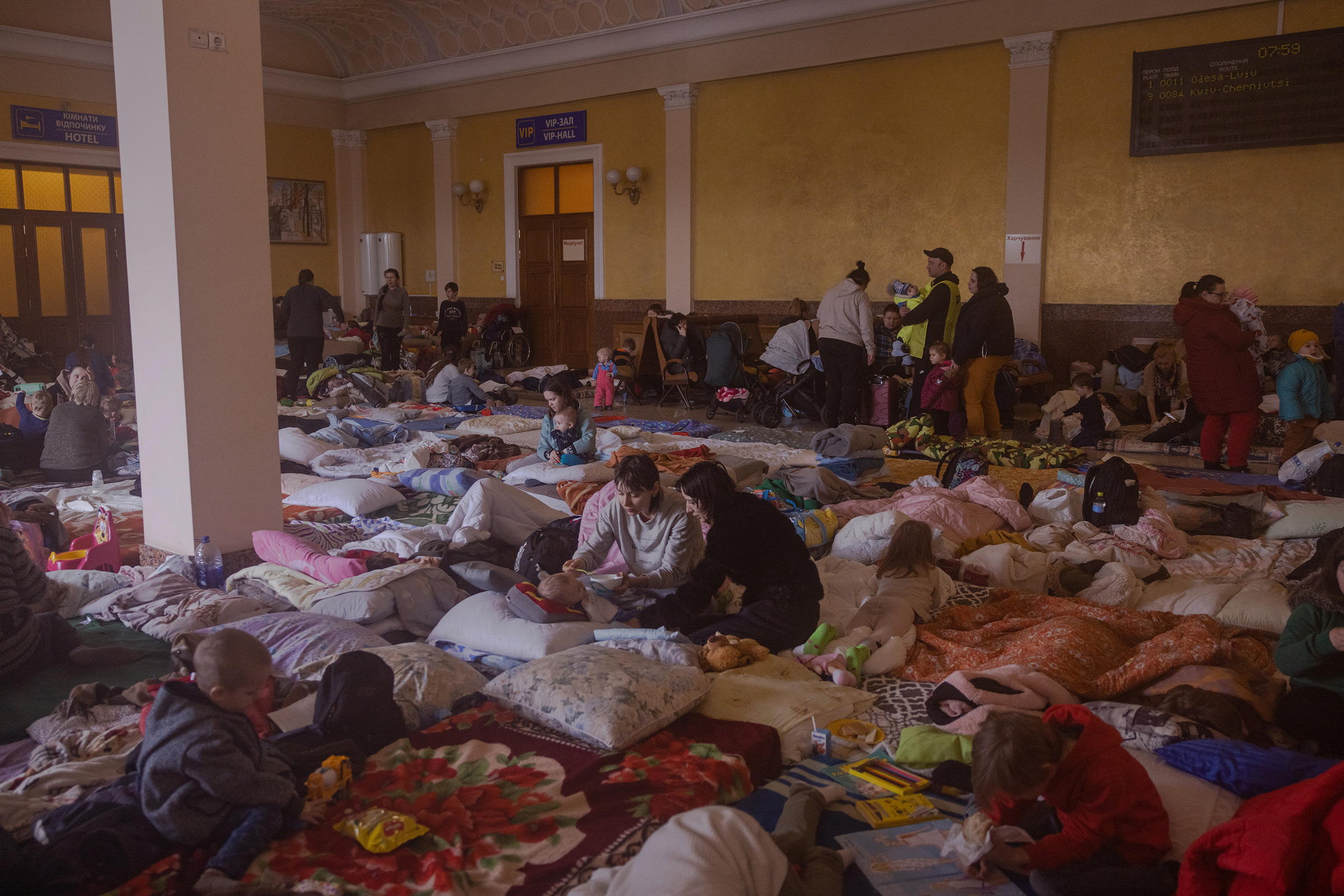
At the Lviv railway station on March 9, volunteer nurses and doctors treat women and children upstairs in the sprawling ticket halls. Women who have recently arrived hunkered down for the night, sleeping on a patchwork of mattresses on the floor. One of them holds a baby who was born six days earlier, in Kharkiv, in eastern Ukraine, as Russian missiles relentlessly bombarded the city. Neat piles of donated diapers and baby food are a constant reminder of the fact they fled with almost nothing. Down below, on the platforms, groups of young women tearfully kiss and hug their uniform-clad partners before they leave on trains going closer to the front.
Watching them is Natalia Koltarevska, a 55-year-old from Odesa who works as a lab technician in a maternity hospital. She is at the station preparing to return home to the Black Sea city after taking her two small grandchildren to the protection of the high hills of Ukraine’s Carpathian Mountains.
“We are all suffering psychologically but I must go back,” she says, adding that she now works for free, handing over her monthly salary to the Ukrainian army. “Babies will not stop being born. We need to keep going. Together we can overcome this.”
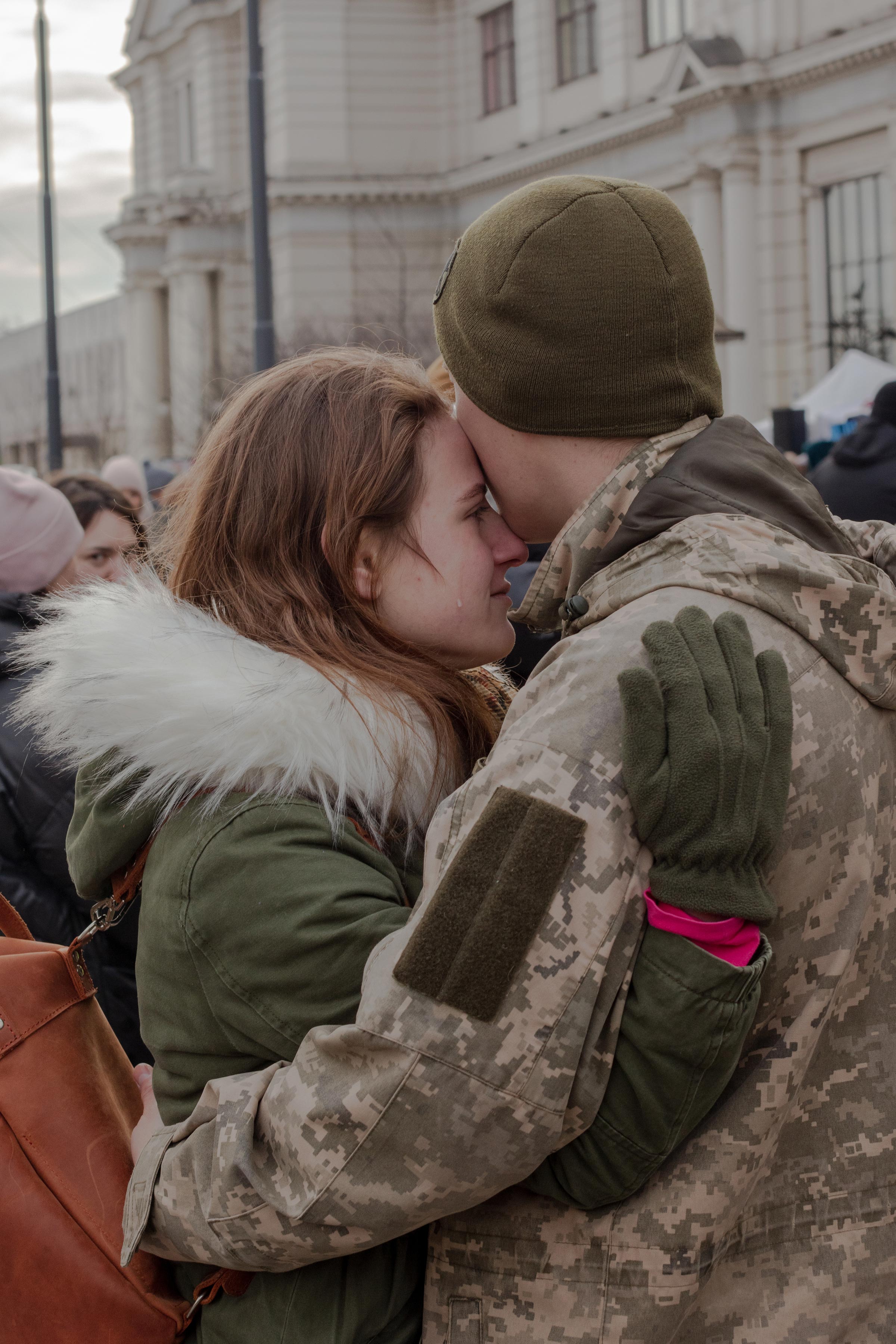
More Must-Reads from TIME
- Cybersecurity Experts Are Sounding the Alarm on DOGE
- Meet the 2025 Women of the Year
- The Harsh Truth About Disability Inclusion
- Why Do More Young Adults Have Cancer?
- Colman Domingo Leads With Radical Love
- How to Get Better at Doing Things Alone
- Michelle Zauner Stares Down the Darkness
Contact us at letters@time.com
